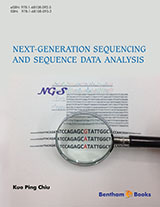Abstract
In chapter 4, we reviewed the background and history of genome sequencing and assembly. In this chapter, we will focus more on the technical and experimental issues. In science, the term “whole genome sequencing and assembly” is often used interchangeably with “genome sequencing and assembly”, “genome sequencing” and “genome assembly”, because genome assembly normally refers to the assembly of an entire genome and genome sequencing is normally followed by assembling sequence reads to produce a complete set of chromosomal sequences for the genome of interest. For convenience, genome assembly and genome sequencing are preferred and will be used more often than the others throughout our discussion. Since whole genome sequencing and assembly is a complicate process, involving multiple alternatives and methodologies, it is not possible to cover every detail. We will go through some concepts and NGS-associated procedures so that readers can get some idea of how the genome assembly is achieved. Serious readers are recommended to consult previous reports published by sequencing laboratories.
Keywords: Contig, De novo genome assembly, Genome assembly, Genome sequencing, Scaffold.






















